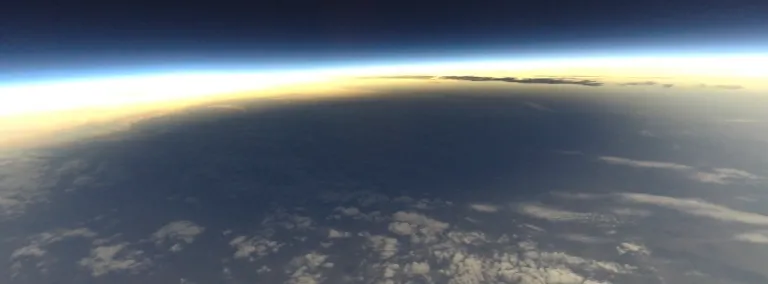Solar Eclipse Balloon Project
A report from the field by the leader of the South Dakota team
Editor’s note: On August 21, groups from across the United States participated in the NASA Eclipse Ballooning Project. As the total solar eclipse cut a swath across the United States, teams from Oregon to South Carolina released high-altitude balloons outfitted with cameras and other equipment to track the moon’s shadow on Earth and learn more about everything from weather patterns to cosmic rays. Peggy Norris, deputy director of Education and Outreach at Sanford Lab, lead a team from South Dakota, which set up near Alliance, Nebraska. This is her account of the experience.
One of the most stressful parts of planning the solar eclipse balloon launch in Nebraska on August 21 was that the launch location depended on the weather, namely the winds. We needed to have the balloon within 10 miles of Alliance High School at eclipse time for the best chance to livestream to NASA, but couldn't do the final predictions of the path until 48 hours ahead of time. The launch site at the city airfield in Mitchell, Nebraska, was chosen months ago, based on 10 years of August 21 weather data.
But just two days before eclipse, we knew we needed to get closer to Alliance, so we moved the launch site 8-10 miles northeast. We weren’t sure how to go about finding a new location at the last minute, so I called the person who was handling events in Mitchell that weekend, to see if she had any suggestions. Lo and behold, her elderly parents had a farm in just the right location. She gave them a call, and soon our advance scouting team was on site and setting up. Her entire family turned out and were delighted to play a role in this project—especially the teenage granddaughter from Arkansas who wants to be an astrophysicist. We called the local internet provider to connect the new location, and we were good to go.
On Eclipse Day, our team arrived at the Kister farm and were greeted with coffee, doughnuts and, after the launch, frittatas for everyone. NBC Nebraska filmed the whole thing. The launch went seamlessly, and the videos of the eclipse from 65,000 feet are awesome, as was “totality,” itself. The balloon burst at 85,000 feet and the parachute brought the payloads down to Earth just outside of Alliance. Mission accomplished!
Zach Christy, a student from the South Dakota School of Mines and Technology, synched the two cameras the team attached to the balloon and put together a five-minute clip of the shadow of the moon advancing and retreating. You can watch it here: https://youtu.be/iQgK-aE7RHA.
You can learn more about NASA’s ballooning program here. https://asd.gsfc.nasa.gov/balloon/
